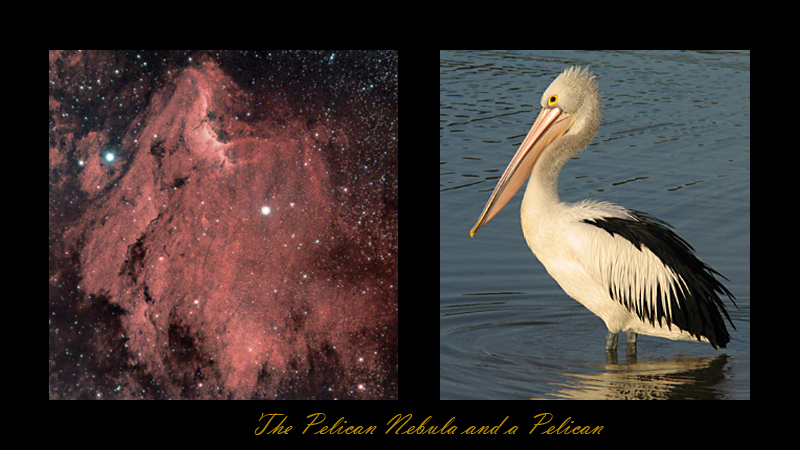Since my processing technique gets better and weather doesn't give any support, I have reprocessed some older images. There is now star colors added and other processing is tweaked too.
The "Pelican Nebula"
Ra 20h 50m 48s Dec +44° 20′ 60"
Image is in HST-palette, (HST=Hubble Space Telescope)
from the emission of ionized elements, R=Sulfur, G=Hydrogen and B=Oxygen.
Star colors are mixed from the NB channels, Red=H-a, G=O-III and B= 85%O-III + 15%H-a.
The Pelican Nebula (also known as IC5070 and IC5067) is an Hydrogen emission region associated with the North America Nebula in the constellation Cygnus. The nebula resembles a pelican in shape, hence the name. The Pelican Nebula is , close to Deneb, and divided from its brighter, larger neighbor, the North America Nebula, by a molecular cloud filled with dark dust. Distance is about 1800 light years
Natural color composition from the emission of ionized elements, R=80%Hydrogen+20%Sulfur, G=100%Oxygen and B=85%Oxygen+15%Hydrogen to compensate otherwise missing H-beta emission. This composition is very close to a visual spectrum.
A closeup
Image is shot with a QHY9 and the Meade LX200 GPS 12" @ f5, pixel scale 0.75pixels/arc second.
Original versions from September 2009, with technical details:
A wide field image, the area of interest is marked with a gray rectangle.
North America Nebula is in upper part of the image. The dark molecular cloud, mentioned in a text above, can be seen in the middle.
This image is my firs narrowband image, original data is here:
It does look like a Pelican!





0 comments:
Post a Comment